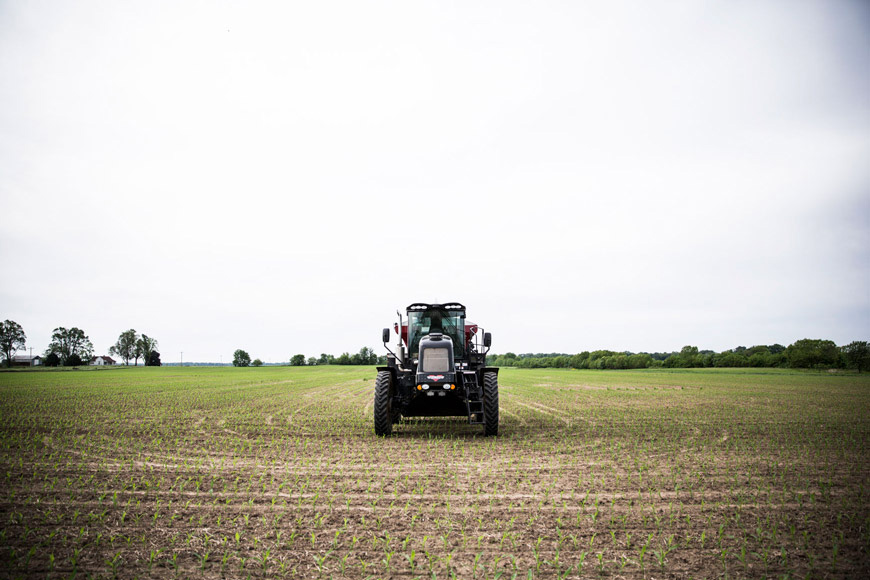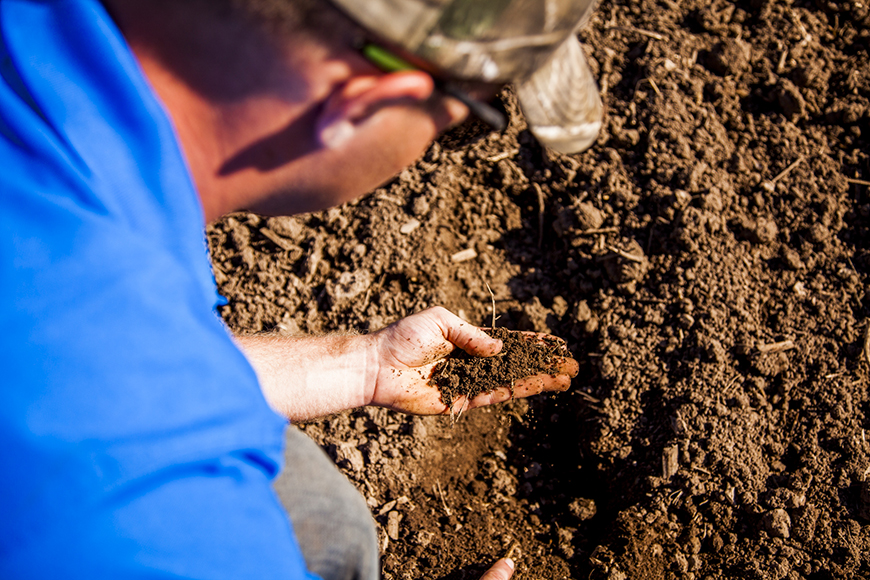Micronutrients Aren’t Optional

When you hear the word “micro,” what comes to mind? Do you immediately think “insignificant” or “nonessential”? If so, you may assume that micronutrients are an optional component of your plant nutrition program. But that’s not the case. Micronutrients are needed in smaller quantities compared to macronutrients, but their importance on plant nutrition for your corn and soybean crops can’t be overstated.
Prioritize Zinc, Manganese and Boron in Corn
For corn, there are three key micronutrients I recommend focusing on. The first is zinc, which is typically one of the most deficient micronutrients in corn. Zinc is immobile in soil and tissue, so it’s critical that plants have a constant supply throughout the season to meet growth and development needs. In addition to a seed treatment, you can boost early-season zinc levels in a starter fertilizer application. You can also tank mix zinc products with a postemergence herbicide application to address substantial crop needs from V5 to V8.
When considering your micronutrient options, look for formulations that are more efficient for plant uptake. MAX-IN® Zinc, for example, is a foliar option made with CornSorb® technology, which increases droplet spread, coverage and humectancy to help get more nutrients through the leaf cuticle to internal leaf structures.
Next, I would look at manganese levels in corn. Manganese is an essential micronutrient for photosynthesis. The corn plant begins to maximize photosynthesis from V9 to V15, making it an ideal time for a manganese application. Manganese is typically tied up in the soil, so one of the best ways to get it into the plant at this time is via a foliar application. MAX-IN Ultra ZMB® is an effective product that supplies zinc, manganese and some boron, which are vital for plant health and vigorous growth.
Boron is another micronutrient I recommend keeping a close eye on in corn. One of boron’s jobs is to help transfer carbohydrates in the plant. Around tassel time, a plant’s stalks and leaves lose boron as it is remobilized to the ear silk and tassel. This means plants may not be able to transfer carbohydrates effectively to the newly developing kernels as efficiently ahead of pollination. MAX-IN Boron is a foliar plant nutrition product option that can help replenish boron levels in the leaves. It’s formulated with a patented adjuvant for maximum nutrient efficacy and is compatible with other crop protection products.
Set Soybeans Up For Success With Boron and Manganese
Similar to corn, sufficient amounts of manganese are needed in soybeans to maximize photosynthesis. Timing a manganese application between R1 and R4 will help ensure plants have enough of the nutrient to help put on flowers and fill pods. Taking a tissue sample during these times will allow you to assess the needs of hidden micronutrient hunger. Remember that manganese makes the entire photosynthetic process more efficient. MAX-IN Ultra Manganese is a foliar product that includes CornSorb technology to increase plant uptake and nutrient availability.
I’d also recommend analyzing boron levels in soybeans. Similar to corn, boron in soybeans plays a role in plant health and takes the carbohydrates produced via photosynthesis and moves them throughout the plant. Pairing boron with manganese in soybeans is a one-two punch for optimal micronutrient management. First, manganese increases photosynthesis efficiency and carbohydrate production, then boron ensures that those carbohydrates are remobilized within the plant.
Monitor Plant Nutrition Throughout The Season
Use both physical and virtual tools to assess crop health and plant nutrition. In-season imagery and modeling applications, as well as past year yield maps, can help you visualize where there might be a nutrient deficiency in your fields. These advanced insights can help you target your tissue-sampling strategy to get the best data to make in-season fertility decisions.
Speak with your locally owned and operated WinField® United retailer to learn more about managing micronutrients to maintain yield potential.
All photos are either the property of WinField United or used with permission.
© 2022 WinField United. Important: Before use always read and follow label instructions. Crop performance is dependent on several factors many of which are beyond the control of WinField United, including without limitation, soil type, pest pressures, agronomic practices and weather conditions. Growers are encouraged to consider data from multiple locations, over multiple years and to be mindful of how such agronomic conditions could impact results. CornSorb, MAX-IN, R7, Ultra ZMB and WinField are trademarks of WinField United. All other trademarks are the property of their respective owners.





.jpg?ext=.jpg)